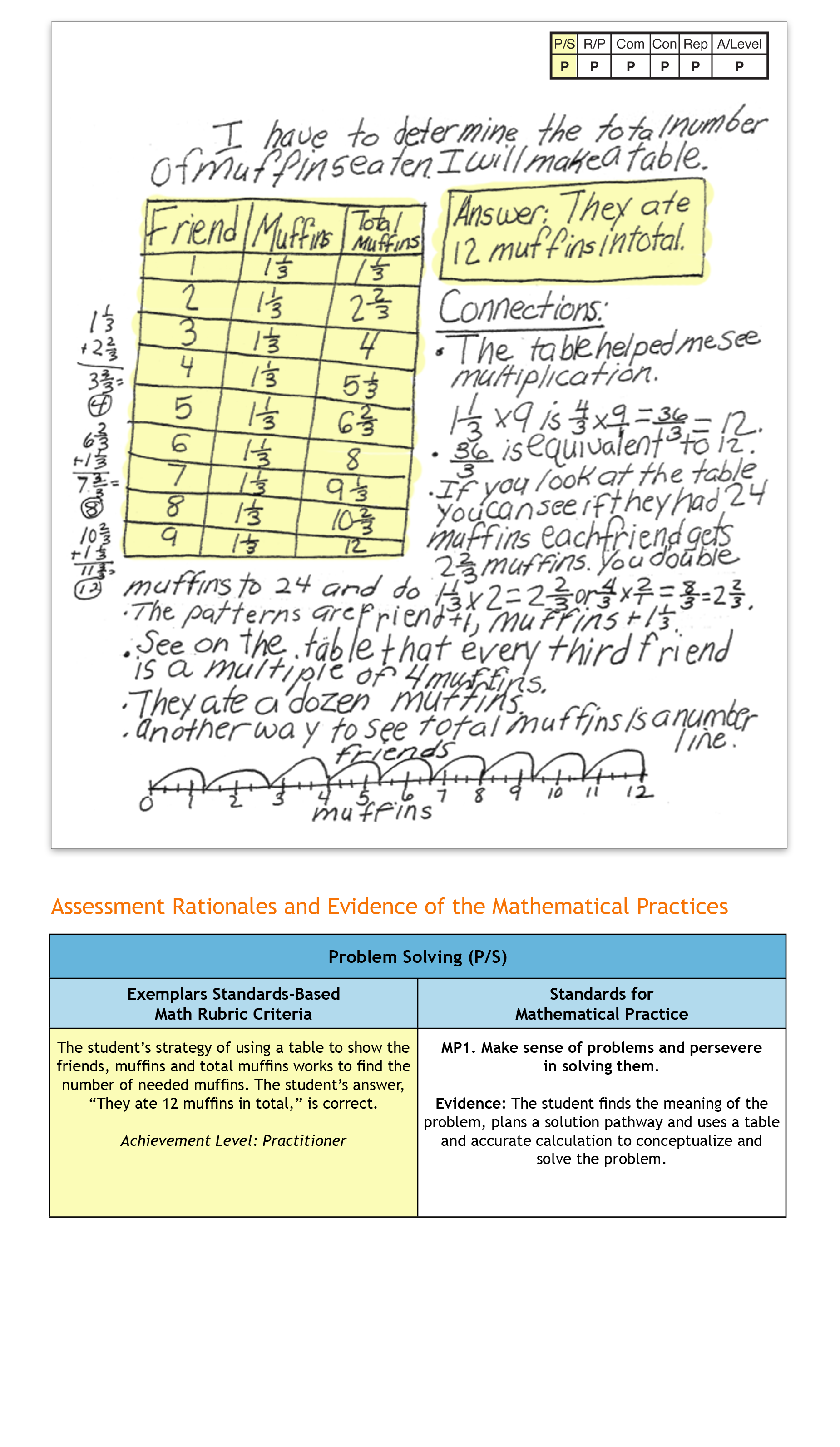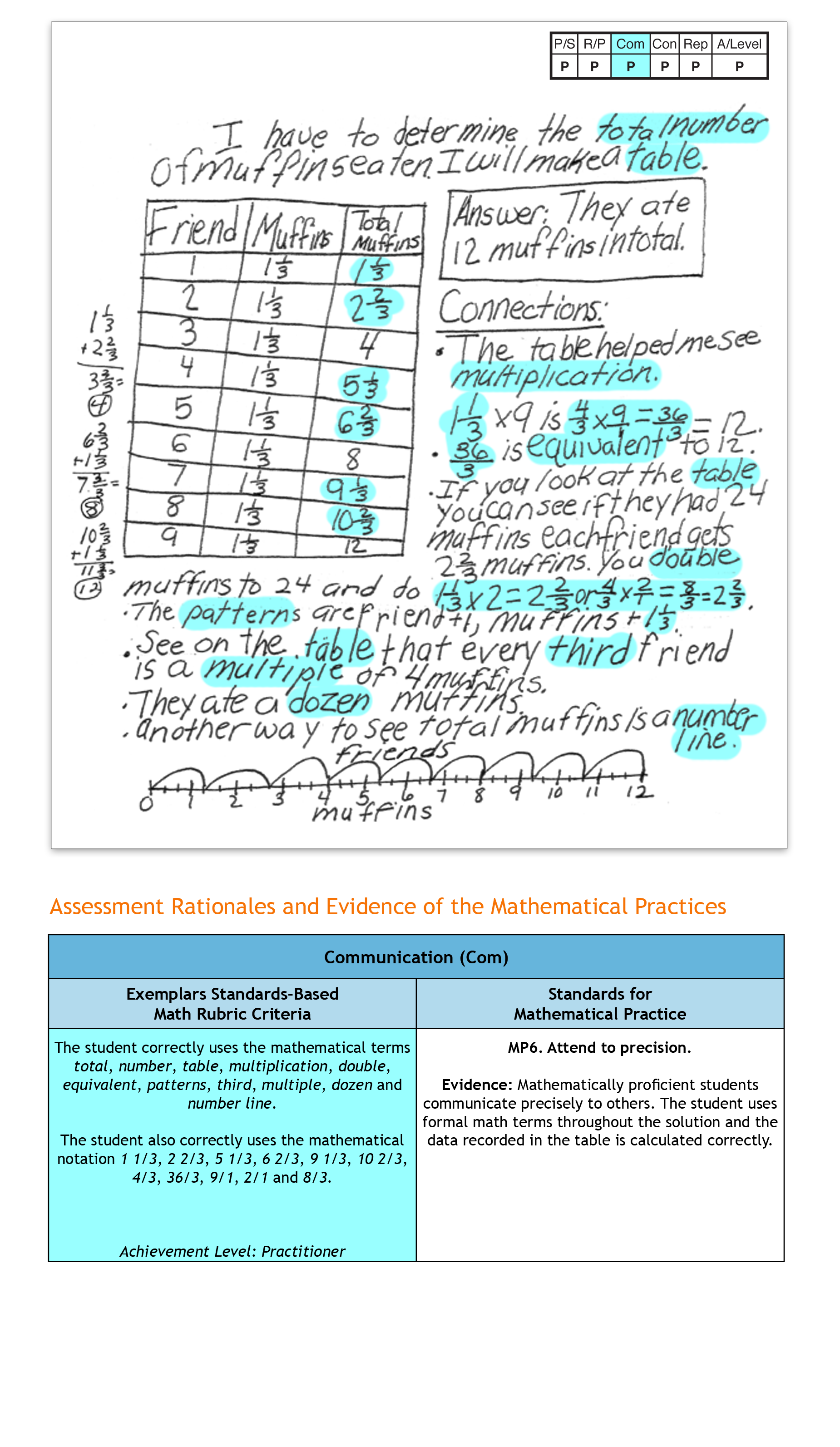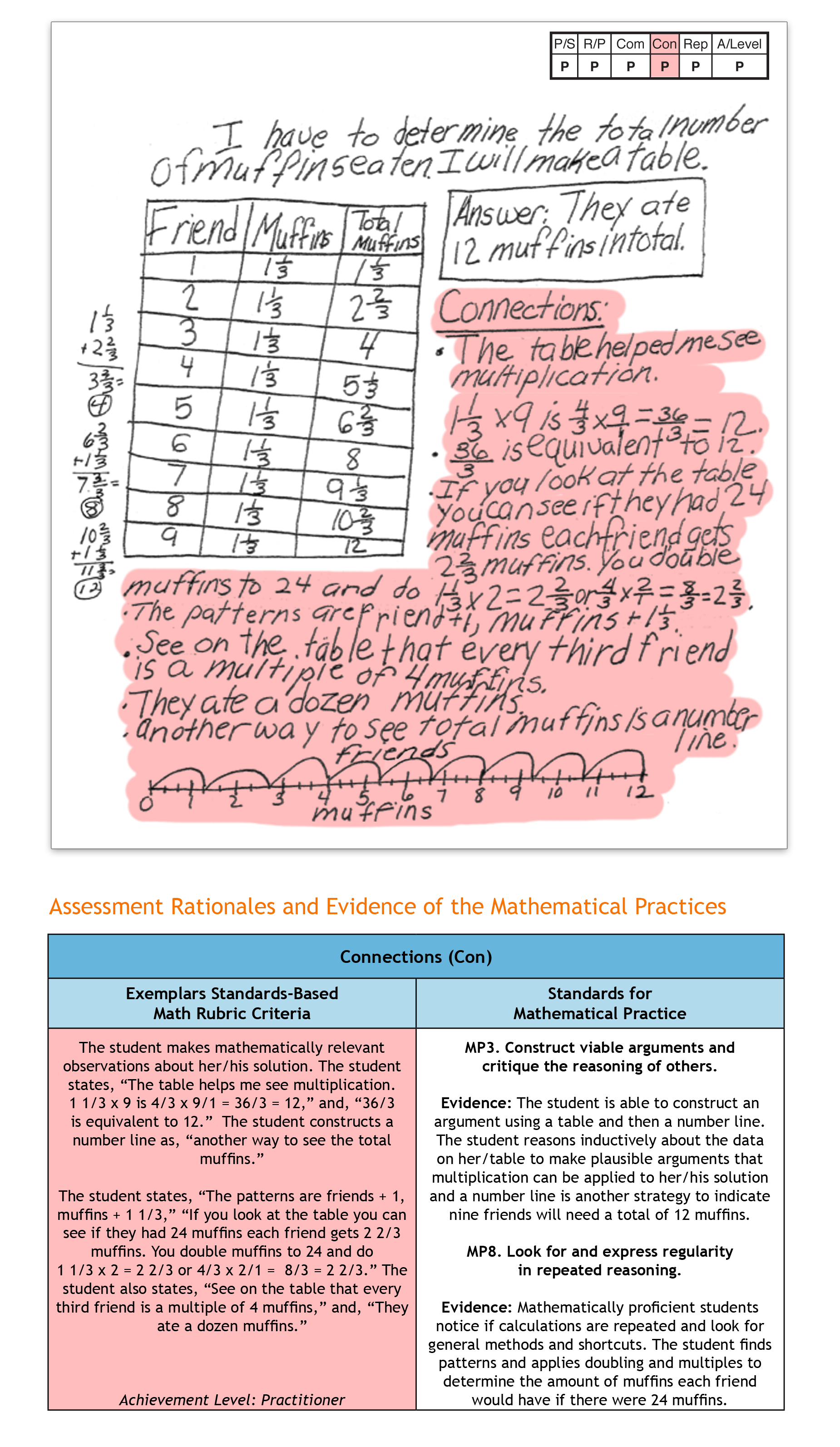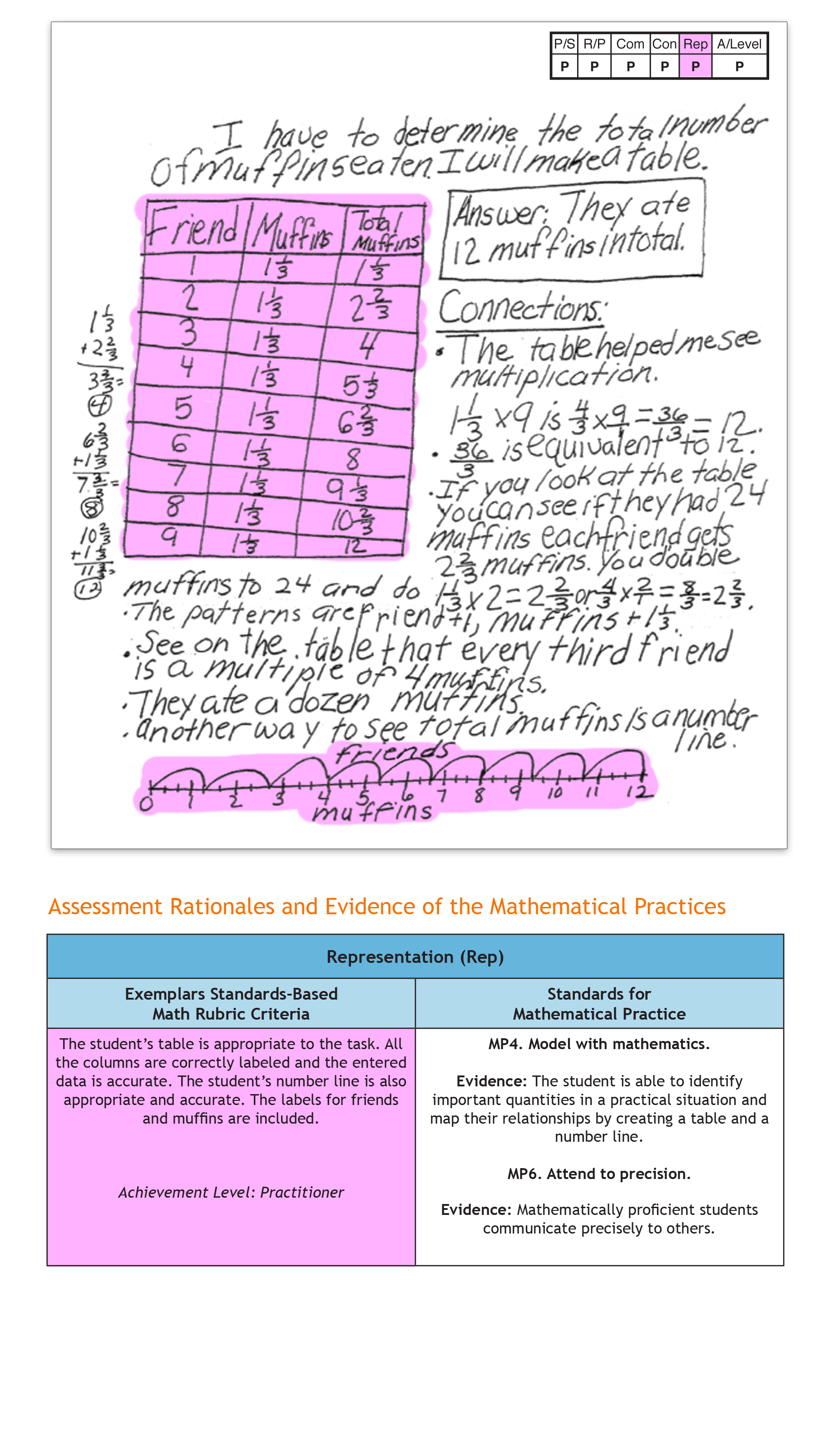Supporting the Standards for Mathematical Practice With Exemplars Performance Tasks and Rubric at the Fourth Grade Level
Written By: Deborah Armitage, M.Ed., Exemplars Math Consultant
Summer Blog Series Overview:
Exemplars performance-based material is a supplemental resource that provides teachers with an effective way to implement the Common Core through problem solving. This blog represents Part 5 of a six-part series that features a problem-solving task linked to a CCSS for Mathematical Content and a student’s solution in grades K–5. Evidence of all eight CCSS for Mathematical Practice will be exhibited by the end of the series.
The Exemplars Standards-Based Math Rubric allows teachers to examine student work against a set of analytic criteria that consists of the following categories: Problem Solving, Reasoning and Proof, Communication, Connections and Representation. There are four performance/achievement levels: Novice, Apprentice, Practitioner (meets the standard) and Expert. The Novice and Apprentice levels support a student’s progress toward being able to apply the criteria of a Practitioner and Expert. It is at these higher levels of achievement where support for the Mathematical Practices is found.
Exemplars problem-solving tasks provide students with an opportunity to apply their conceptual understanding of standards, mathematical processes and skills. Observing student anchor papers with assessment rationales that demonstrate the alignment between the Exemplars assessment rubric and the CCSS for Mathematical Content and Mathematical Practice can be insightful for educators. Anchor papers and assessment rationales provide examples of what to look for in your own students’ work. Examples of Exemplars rubric criteria and the Mathematical Practices are embedded in the assessment rationales at the bottom of the page. The full version of our rubric may be accessed here. It is often helpful to have this in hand while reviewing a piece of student work.
Blog 5: Observations at the Fourth Grade Level
The fifth anchor paper and set of rationales we’ll review in this series is taken from a fourth grade student’s solution for the task “Sharing Muffins.” This task is one of a number of Exemplars tasks aligned to the Numbers and Operations–Fractions Standard 4.NF.3c.
“Sharing Muffins” would be used toward the end of the learning time allocated to this standard. This task provides fourth graders with an opportunity to apply different strategies to determine the number of muffins needed for each of nine friends to have one and one-third muffins. In solving this task, there are a variety of strategies for students to consider. Some examples include using actual muffins to model one and one-third muffins per friend or diagramming the muffins using a table, tally chart or number line. In their solutions, students may replace each mixed number with an equivalent fraction. Addition, subtraction and multiplication of fractions may also be used.
Fourth Grade Task: Sharing Muffins
Nine friends are going to equally share some muffins. Each muffin is the same size. Each friend gets one and one-third muffins. How many muffins did the nine friends equally share? Show all your mathematical thinking.
Common Core Task Alignments
- Content Standard 4.NF.3c: Add and subtract mixed numbers with like denominators e.g., by replacing each mixed number with an equivalent fraction, and/or by using properties of operations and the relationship between addition and subtraction.
- Mathematical Practices: MP1, MP2, MP3, MP4, MP5, MP6, MP7, MP8







